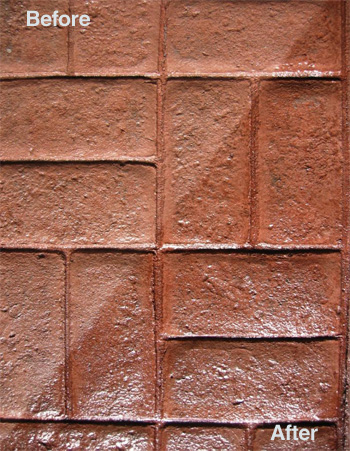Learn how to use our products and
find answers to questions or concerns.
There are three common scenarios that cause bubbles to form:
This is not a method for removing the sealer; it is a method intended to correctly re-form the acrylic film, and get rid of the bubbles. For instruction on how to remove a sealer, please see ChemMasters explanation of our how to strip a sealer.
Necessary supplies: a short nap solvent resistant roller, sprayer (optional for xylene application), and a natural bristle broom (if over application of the sealer is severe).
Necessary materials: Xylene (1 gallon for every 300 Sq. ft of work area on the concrete surface).
Xylene1 should be applied to the problem area at 300 Sq. ft/gallon, using a sprayer or a roller, and then allowed to soak until the acrylic is dissolved.
The acrylic will become soft and gummy after approximately 1 to 2 minutes, at which point a roller may be used to break up the sub-surface bubbles. If the over application is substantial, it may be necessary to use a natural bristle broom to gently scrub the acrylic, using care not to disrupt the highlight colors in stamped concrete (ex., highlight colors often appear black, and are designed to accentuate the contours of the stamped concrete, creating an illusion that the concrete is stone). The purpose of this step is to ensure that the xylene has “melted” the acrylic, transforming the acrylic from a solid state to a liquid state.
A paint roller dampened with xylene should be rolled through the dissolved acrylic to remove the broom pattern (the broom pattern caused by step #2), and leave behind an even film. Also, you should not roll “back-and-forth” with the roller, instead only roll in one direction.
Tips
This method works best on a cool, overcast day with no wind (favorable weather allows the dissolved solvent some time to dwell on surface of the concrete without evaporating, thereby giving you more time to correct the problem).
It is a good idea to have a small paint brush to even-out dissolved sealer in low-lying areas, such as artificial mortar joints.
If your objective is to maintain a glossy concrete surface, and you don't want to deal with the headaches of over-application ever again, ChemMasters has the solution…
Targeted for release in 2011, ChemMasters has developed a patented technology which:

We call the product Gloss Restorer.
Gloss Restorer can be applied using the same methods as traditional acrylic sealers, and can be applied whenever you want your concrete to appear as glossy as the day it was first sealed.